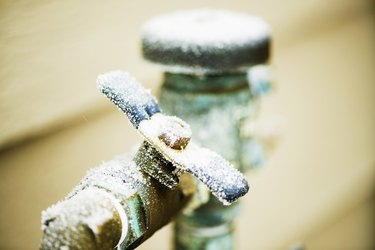Crucial Advice to Prevent Frozen Plumbing in Cold Weather: Professional Insights
Crucial Advice to Prevent Frozen Plumbing in Cold Weather: Professional Insights
Blog Article
What are your thoughts with regards to Helpful Tips to Prevent Frozen Pipes this Winter?

Winter can ruin your pipes, particularly by freezing pipes. Here's how to prevent it from occurring and what to do if it does.
Introduction
As temperatures drop, the danger of icy pipes boosts, possibly resulting in pricey repair work and water damages. Understanding how to prevent frozen pipelines is essential for homeowners in cool environments.
Avoidance Tips
Shielding susceptible pipes
Wrap pipes in insulation sleeves or use heat tape to protect them from freezing temperature levels. Focus on pipelines in unheated or exterior locations of the home.
Home heating techniques
Keep indoor spaces adequately heated, specifically locations with pipes. Open up cabinet doors to permit warm air to distribute around pipelines under sinks.
Exactly how to recognize icy pipes
Seek lowered water circulation from faucets, uncommon smells or sounds from pipelines, and visible frost on revealed pipes.
Long-Term Solutions
Architectural modifications
Consider rerouting pipes far from exterior walls or unheated locations. Add additional insulation to attics, basements, and crawl spaces.
Upgrading insulation
Buy top notch insulation for pipes, attics, and walls. Appropriate insulation aids keep consistent temperatures and minimizes the threat of icy pipes.
Shielding Outside Pipes
Garden hoses and exterior faucets
Separate and drain yard hose pipes prior to winter season. Mount frost-proof spigots or cover outside taps with insulated caps.
Understanding Frozen Pipelines
What causes pipes to ice up?
Pipelines ice up when exposed to temperature levels listed below 32 ° F (0 ° C) for extended periods. As water inside the pipelines ices up, it expands, putting pressure on the pipe walls and possibly creating them to break.
Dangers and damages
Icy pipes can result in water system interruptions, property damages, and pricey repair services. Burst pipes can flooding homes and create substantial architectural damages.
Indications of Frozen Pipeline
Identifying icy pipes early can stop them from rupturing.
What to Do If Your Pipes Freeze
Immediate activities to take
If you think icy pipes, maintain taps open to soothe pressure as the ice thaws. Utilize a hairdryer or towels soaked in hot water to thaw pipes slowly.
Verdict
Avoiding frozen pipes calls for positive procedures and fast feedbacks. By understanding the causes, signs, and safety nets, house owners can secure their plumbing throughout winter.
5 Ways to Prevent Frozen Pipes
Drain Outdoor Faucets and Disconnect Hoses
First, close the shut-off valve that controls the flow of water in the pipe to your outdoor faucet. Then, head outside to disconnect and drain your hose and open the outdoor faucet to allow the water to completely drain out of the line. Turn off the faucet when done. Finally, head back to the shut-off valve and drain the remaining water inside the pipe into a bucket or container. Additionally, if you have a home irrigation system, you should consider hiring an expert to clear the system of water each year.
Insulate Pipes
One of the best and most cost-effective methods for preventing frozen water pipes is to wrap your pipes with insulation. This is especially important for areas in your home that aren’t exposed to heat, such as an attic. We suggest using foam sleeves, which can typically be found at your local hardware store.
Keep Heat Running at 65
Your pipes are located inside your walls, and the temperature there is much colder than the rest of the house. To prevent your pipes from freezing, The Insurance Information Institute suggests that you keep your home heated to at least 65 degrees, even when traveling. You may want to invest in smart devices that can keep an eye on the temperature in your home while you’re away.
Leave Water Dripping
Moving water — even a small trickle — can prevent ice from forming inside your pipes. When freezing temps are imminent, start a drip of water from all faucets that serve exposed pipes. Leaving a few faucets running will also help relieve pressure inside the pipes and help prevent a rupture if the water inside freezes.
Open Cupboard Doors
Warm your kitchen and bathroom pipes by opening cupboards and vanities. You should also leave your interior doors ajar to help warm air circulate evenly throughout your home.
:strip_icc()/snow-outdoor-faucet-pipes-4af65d1e5e904fb1aa7bf74071fe5d89.jpg)
I found that entry on Helpful Tips to Prevent Frozen Pipes this Winter while doing a search on the web. Those who liked our blog entry plz be sure to pass it around. Kudos for being here. Please check up our site back soon.
Click Here Report this page